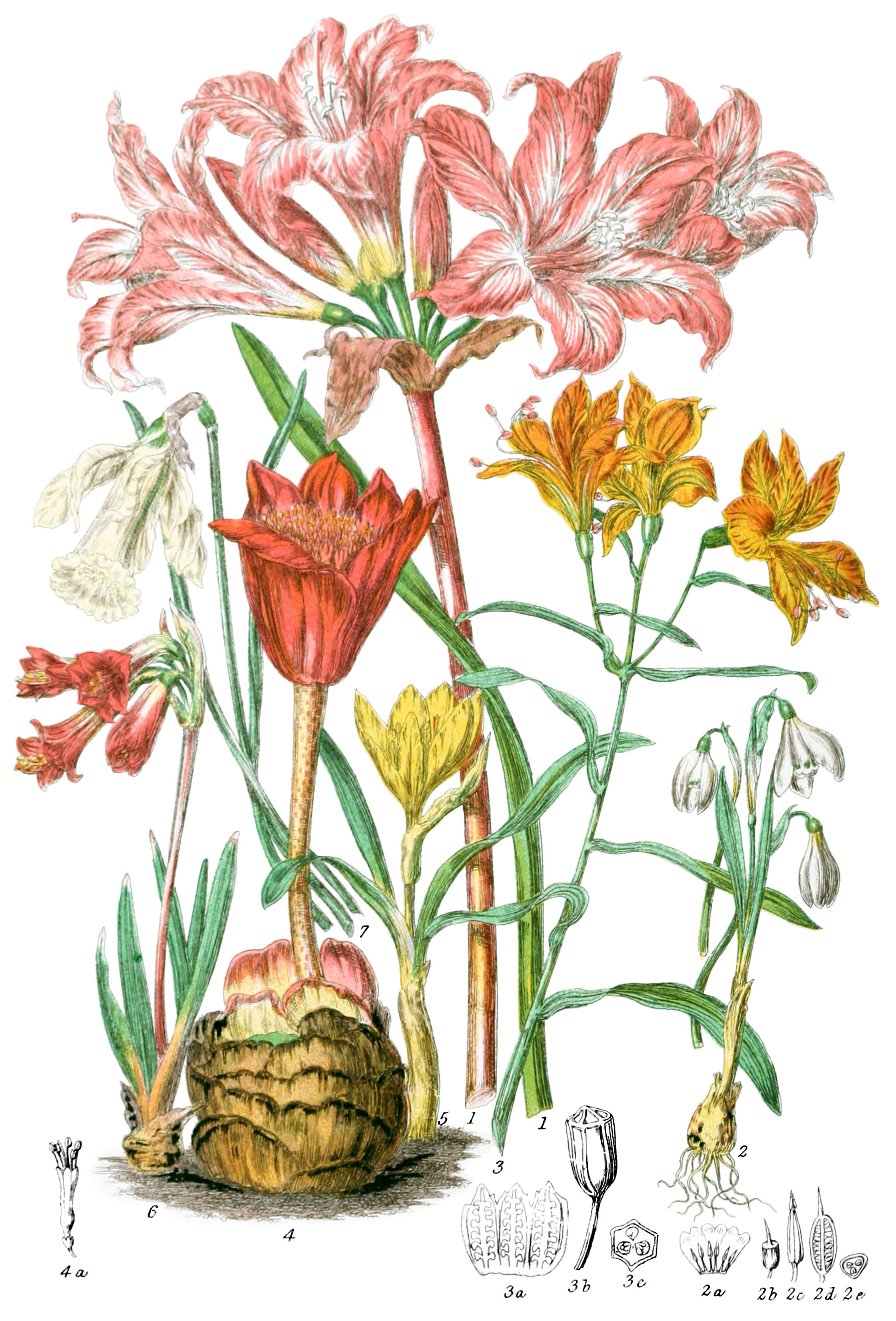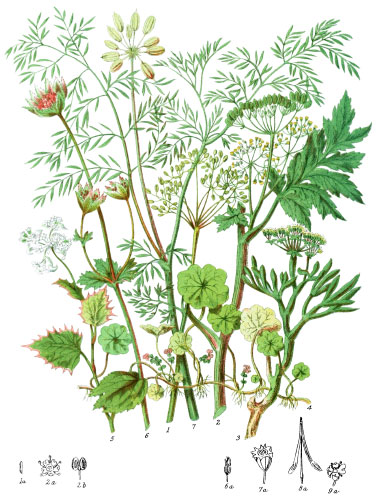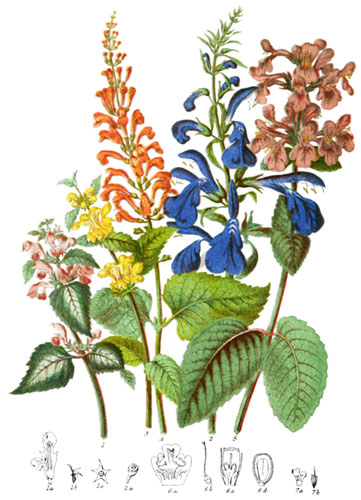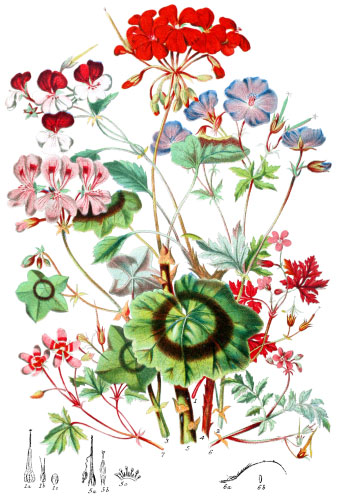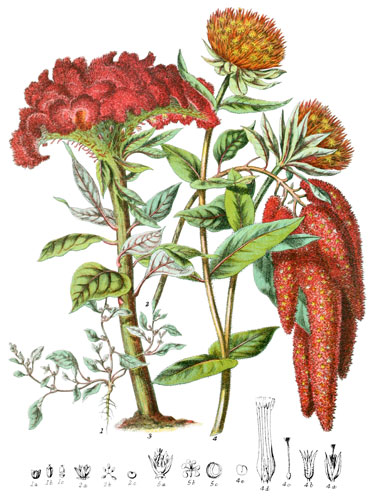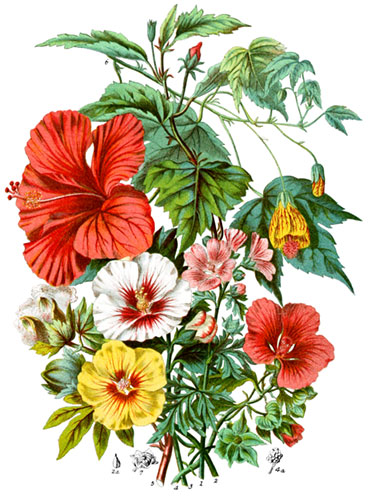Key characteristics
Herbaceous plants, generally with bulbous root, sometimes fibrous-rooted; occasionally with a small cylindrical stem. The leaves are sword-shaped, with parallel veins, rarely widened at the sides into an oval shape. The flowers have usually a sheathing bract at the base. The calyx and corolla are combined, three outer and three inner parts, adherent, regular in form, and equally coloured. The stamens are six, arising from the corolla, sometimes cohering at their bases into a kind of cup, sometimes an expanded tube or cup is within the row of stamens. The ovary is three-celled, the style single, the stigma three-lobed. The fruit is a three-celled and three-valved capsule, or a berry with one or three seeds. The seeds have either a thin membranous covering, or a thick fleshy coat, and contain fleshy albumen.
This Tribe has close affinity with Hæmodoraceæ and Iridaceæ, and is also in many points connected with Liliaceæ.
The bulbs of some species contain poisonous juices.
Select plants in this order
Not all plants listed are illustrated and not all plants illustrated are listed.
- Amaryllis is a genus pre-eminent amongst the most beautiful flowers, of extremely simple manner of growth, without stem or branches, but producing magnificent flowers of great brilliancy in colour; the celebrated Guernsey Lily, Amaryllis sarniensis, and others, appearing in the sunshine as if sprinkled with gold.
- A. formosissima was the first species introduce into England from the Cape, nearly two hundred years since; it bears a single flower on the stalk, with long petals of a bright crimson.
- A. belladonna (1) was first received here in the beginning of this century, from Portugal, probably imported there from Brazil; although a native of a hot climate, it flourishes in the open air, if the bulbs are placed under the shelter of a wall in a sunny southern aspect.
- Brunswigia orientalis, the Chandelier Lily, is a very noble plant, rising out of a bulb as large as a child’s head, bearing on its stem numerous orange flowers on spreading stalks.
- Although of very different and lowly aspect, the simple Snowdrop (2) is one of the most admired and cherished of flowers.
- Alströmeria (3), named after a Swedish baron, has a remarkable character in the leaves being placed on the stem with the under surface uppermost, which causes them to twist, in order to bring the porous side into the light and air.
- The roots of A. pallida and others contain starch, from which a kind of arrow-root is prepared in Chile.
- A. Salsilla yields a considerable supply of food in the West Indies.
- Hæmanthus (4) produces its singular involucre, enclosing numerous flowers, before the leaves.
- Several species belong to the Cape, and it is said that the Hottentots use the poisonous juice of the bulbs of H. toxicarius to poison their arrows.
- The fruit of Hæmanthus, when ripe, is the size of a small cherry.
- Sternbergia lutea (5) abounds in the south of Europe and Palestine: some travellers suppose it to be the “Lily of the field,” which Divine wisdom declared to surpass in dazzling splendour the array of the most glorious kinds.
- Phycella ignea (6) is one of the brilliant productions of Chile.
- The genus Narcissus is of interest as being one of the few which extend into Europe; many species are found in the southern countries.
- N. pseudo-narcissus, the Daffodil, is occasionally seen wild in England: N. moschatus (7) is one of the various species of Spain. The peculiar character of the flowers is the elegant cup or crown within the petals; in some it is shallow, in others tubular, beautifully curled at the rim. Nearly all come forth in the spring, and for their bright golden hues, or pure white, as well as delicious fragrance, are highly esteemed.
- The most celebrated plant of this Tribe is the Aloe, Agave Americana. In its native country it forms impenetrable hedges with its solid leaves, bordered with strong spines; a single plant will spread its leaves to a circumference of eighteen feet. But the chief value is derived from the sap, which exudes when the young bud is cut off; and when fermented, becomes the favourite pulque of the Mexicans: they also prepare paper from the fibres.
- Littæa geminiflora has a stem like an Aloe, thirty-five feet high, with grass-like leaves at the base.
- Another lofty pant is Doryanthes excelsa; the straight stem clothed with small leaves, surrounded by the head of crimson flowers.
- Crinum and Pancratium are natives of India, with elegant white flowers.
- Hippeastrum, the Knight’s-star of Brazil, appears there in countless numbers.
- Fourcroya attains an extreme height of flower-stem, with rapid growth.
Locations
This Tribe exists in greatest abundance and variety at the Cape. Some species are plentiful in South America, particularly in Brazil; others abound in the East and West Indies: a few have been discovered in Australia.
Legend
- Amaryllis belladonna, Belladonna Lily. West Indies.
- Galanthus nivalis, Snowdrop. England.
- Inner petals.
- Stamen.
- Ovary.
- Section.
- Section.
- Alströmeria aurantiana, Orange Alströmeria. Chile.
- Seed-vessel.
- Open.
- Cross Section.
- Hæmanthus coccineus, Red Hæmanthus. Cape of Good Hope.
- Flower.
- Sternbergia lutea, Golden Lily. Palestine.
- Phycella ignea. Chile.
- Narcissus moschatus. Spain.
Explore more
Posters
Decorate your walls with colorful detailed posters based on Elizabeth Twining’s beautiful two-volume set from 1868.
Puzzles
Challenge yourself or someone else to assemble a puzzle of all 160 botanical illustrations.
